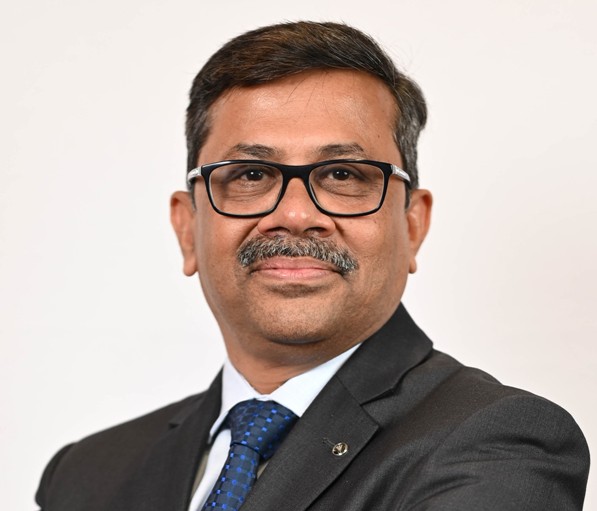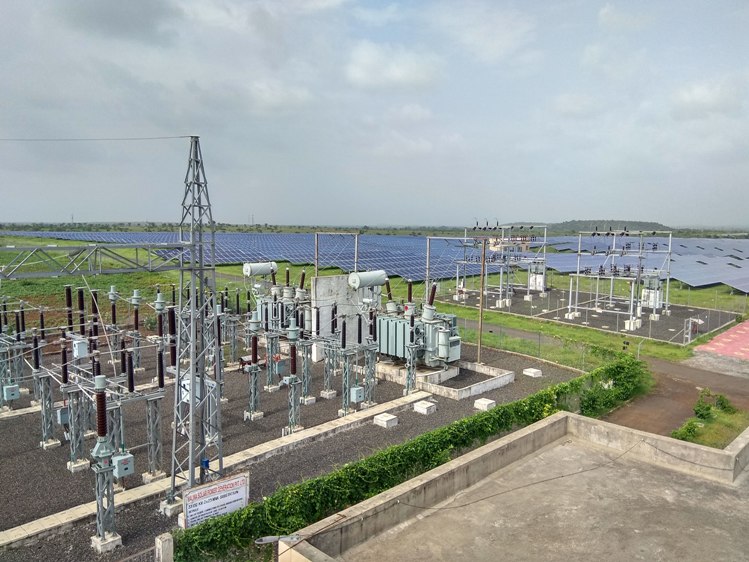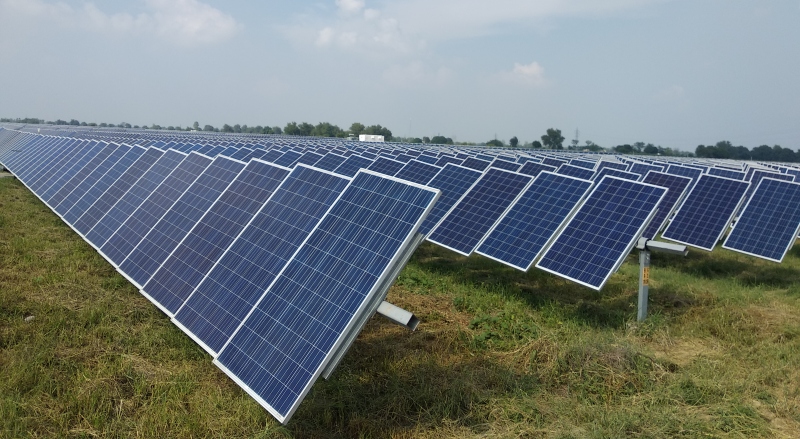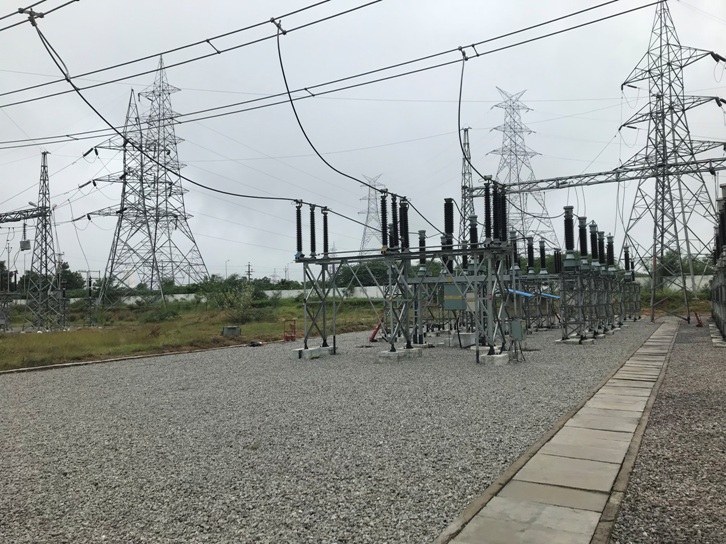Renewable energy has witnessed stability, despite global challenges: Vector Green Energy
- March 28, 2022
 A renewable energy-focused independent power producer, Vector Green Energy today has an operational portfolio of over 650 mw, in addition to a long pipeline of under-construction and investment-ready projects. In this exclusive exchange, Sameer Mathur, India – COO, Vector Green Energy Pvt Ltd, shares keen insights on the overall policy framework governing renewable energy development in India. Mathur feels that if the country has to achieve the targeted 500 GW of RE capacity by 2030, key policy issues need to be sorted out, especially those to do with disparities in Central and state guidelines. All the same, Mathur asserts that the Indian renewable energy sector is brimming with excitement, and that developers are chugging on confidently, thanks to timely government support.
A renewable energy-focused independent power producer, Vector Green Energy today has an operational portfolio of over 650 mw, in addition to a long pipeline of under-construction and investment-ready projects. In this exclusive exchange, Sameer Mathur, India – COO, Vector Green Energy Pvt Ltd, shares keen insights on the overall policy framework governing renewable energy development in India. Mathur feels that if the country has to achieve the targeted 500 GW of RE capacity by 2030, key policy issues need to be sorted out, especially those to do with disparities in Central and state guidelines. All the same, Mathur asserts that the Indian renewable energy sector is brimming with excitement, and that developers are chugging on confidently, thanks to timely government support.
What is the current asset portfolio size of Vector Green Energy in terms of operational and planned projects?
Vector Green’s portfolio comprises of around 652 MW DC of operating assets, 90 MW DC under construction assets and 1,041MWp of investment-ready projects. Of this, 24 MW is operational wind project and balance is solar. The projects are spread across nine Indian states in India, providing us portfolio diversity (including Rajasthan, Karnataka, Maharashtra, Madhya Pradesh, Punjab, Andhra Pradesh, Telangana, Uttar Pradesh and Gujarat) in addition to other smaller sized projects.
Would Vector Green Energy be interested in participating in greenfield development of its portfolio by way of solar and wind auctions?
As mentioned, Vector Green has been pursuing greenfield expansion and has participated in multiple bids aggregating 1,175MWp till date. VG brings a structured approach to all greenfield opportunities that it pursues including auctions and follows a structured risk framework with appropriate mitigants built in. For example, in order to avoid developmental delays, the team identifies alternate site locations and undertakes basic engineering as a part of the initial bid itself.
Speaking of practical issues, we notice differences between state governments in the way they approach the net-metering and gross-metering issues, mainly related to rooftop solar plants. Please elaborate and let us know what the practical way out should be.
There has always been a gap between the approach of state governments and the Centre. In addition to the rooftops and net metering issues, we have seen larger hurdles created for group captive and third-party open access projects by certain states, through change in regulations (sometimes retrospective as well) which destabilizes the projects significantly.
 Even for some projects where they themselves are counterparties, some states have attempted to re-open signed PPAs or renegotiate them. This is a challenge that needs to be addressed on priority. We welcome the recent judgment from Honorable High Court of AP regarding one such case and hope this will prevent other states from following suit in their PPAs.
Even for some projects where they themselves are counterparties, some states have attempted to re-open signed PPAs or renegotiate them. This is a challenge that needs to be addressed on priority. We welcome the recent judgment from Honorable High Court of AP regarding one such case and hope this will prevent other states from following suit in their PPAs.
Same is the position for rooftops. There have been regulatory impediments to constrain the growth of rooftop solar projects the way they should grow.
However, the conflict for both these is commercial. Discoms need to be pushed to bill all customers instead of burdening individuals and a select class. They also need to limit the electricity losses which are incredibly high for almost all states. State governments should be encouraged to pass on the costs and collect bills from all individuals instead of taking political mileage out of it; conceptually, all these are part of the UDAY scheme and all discom reforms. Until the root cause is addressed, we cannot expect discoms to conduct themselves in a business-friendly manner.
The Union finance ministry has reiterated that basic customs duty (BCD) on imported solar cells and modules will kick in from April 1, 2022. Do you think this would adversely impact domestic solar power capacity addition due to a possible shortage of domestic solar equipment capacity?
In the short term, this might be an impediment. However, MNRE along with GoI has anticipated the same and initiated steps like the PLI-based manufacturing capacity expansion.
 Additionally for ongoing projects, this will be treated as pass-through in tariff. However, offtakers and regulators need to ensure that any impact of change in law due to these duties is quickly paid out to the developers, since any delay in the same would negatively affect developers for no fault of theirs.
Additionally for ongoing projects, this will be treated as pass-through in tariff. However, offtakers and regulators need to ensure that any impact of change in law due to these duties is quickly paid out to the developers, since any delay in the same would negatively affect developers for no fault of theirs.
In fact in some PPAs, where the change in law provisions is not explicitly spelt out, offtakers are refusing to allow any pass-through. Ideally, MNRE should come out with a clear direction to all offtakers to allow such change in law without need for regulatory processes.
Additionally, the change in law is mostly passed on over a long term –24 months (or even more) period post the COD – and that too as a tariff pass-through, not a one-time payment.
This squeezes significant amount of liquidity for developers as this is temporarily equity funded. Plus, there is a risk that the entire cost will not be passed through. Provided the above concerns are addressed, solar developers should be able to meet or even exceed the expectations of annual capacity additions. We feel there is a large amount of work still to be done in this area.
What is your overall view on the potential of offshore wind energy in India?
 India is the second largest peninsula in the world, leading to a tremendous coastline, which is the breeding ground for offshore projects. Plus, some of the coastal belts form the best wind zones for wind projects. It is hence, a given, that our offshore wind potential is one of the highest globally.
India is the second largest peninsula in the world, leading to a tremendous coastline, which is the breeding ground for offshore projects. Plus, some of the coastal belts form the best wind zones for wind projects. It is hence, a given, that our offshore wind potential is one of the highest globally.
The goal of 500 GW renewable capacity will be achieved with India pursuing all renewable technologies across onshore solar PV and wind, rooftop solar and offshore wind.
Over the past four years, we have been waiting for policy clarity and support structure for offshore wind projects. Government policy structure would be essential for unlocking the country’s offshore wind potential.
It also needs to be seen that the engineering and environmental challenges for rightly implementing these projects is not a simple task. Indian developers have seen relatively easy construction processes and timelines for solar and (onshore) wind projects so far. It would be foolhardy to expect similar ease of project implementation at sea. The developers as well as regulators need to take that into cognizance as India embarks on its journey therein. Once the technology gets proven, this can be a significant catalyst for renewable energy growth in India
Energy exchanges like IEX and PXIL have introduced several platforms for green energy trading. Added to this is the resumption in trading in RECs. Do you feel that this could improve the short term green energy trading market? What is your take on longer-duration contracts that energy exchanges are planning to introduce?
A trading market for renewables is one of the most important value drivers for the industry. With intensely competitive prices, operational improvements and carbon credits are again, part of base case value chain rather than mere efficiency tickers. At the same time, implementation challenges remain. For example, Maharashtra’s state regulations have restrictive provisions which prohibits sale of renewable power on such platforms. Until a uniform provision is made applicable across the country, such variations in policy would stymie this initiative.
India has pledged to now have 500 GW of renewable energy capacity (including hydropower) by 2030. What is your overall view on this target? What do you see as major challenges en route?
My overall view is positive! The target is challenging but extremely exciting for all developers. The same is taken positively by all RE players which is why today, the sector possibly has the most diverse and respectable investors spread across the world.
Key positives include government support, ministerial and renewable body positive outlook and global push for the same. Track record in development has also been positive and smaller turnaround time for construction of a project adds to the attractiveness.
Key challenges include domestic manufacturing not being able to keep pace with the growth in power generation capacity, (being addressed through PLI scheme for solar), increasing RE adoption and the grid’s ability to absorb the same (being addressed through hybrid projects and storage projects).
Nevertheless, the support from the Government of India for the same has been very encouraging and the sector has witnessed stability and even growth despite COVID and other global challenges.
(All industrial photographs used in this interview shows renewable energy projects of Vector Green Energy.)


